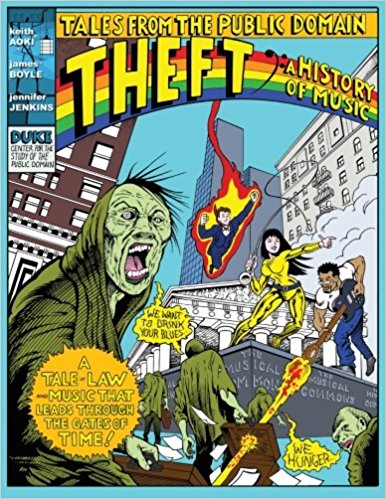
Why the Public Domain Matters
Why care about the public domain? How does it matter to you? Below are only a few examples of activities enabled by a robust public domain. In 2021 you will be able to engage in these kinds of projects, and more, with the wealth of material from 1925 that is entering the public domain. (Though under the law in effect in the US until 1978, you could do all of this with works published in 1964, and, because their copyrights would not have been renewed, with an estimated 85% of the works published in 1991.) Unfortunately, as a result of term extensions, works published from 1925 onward are still subject to copyright and therefore unavailable, even though the vast majority of older works no longer retains commercial value and no one is benefitting from continued copyright protection. And the public domain is shrinking just as digital technology puts the tools to do the things below at all of our fingertips, empowering the millions who could collect, restore, and build upon our cultural heritage.
.gif) Feeding the Creative Muse
Feeding the Creative Muse
Artists of all kinds — writers, musicians, filmmakers, painters — rely on the public domain: “Poetry can only be made out of other poems, novels out of other novels,” as the critic Northrop Frye put it. Creators draw on previous works, and on the cultural artifacts around them; they remix vintage footage with new clips, turn books into plays and musicals, borrow lyrics and melodies from old songs, adapt classic stories to present day circumstances. For example, you or your children may have been transfixed by Disney’s beloved versions of Cinderella, Snow White, Pinocchio, and The Little Mermaid, which are based on public domain works by Charles Perrault, The Brothers Grimm, Carlo Collodi, and Hans Christian Anderson. As Judge Richard Posner observed, if the underlying works were copyrighted, “Measure for Measure would infringe Promos and Cassandra, Ragtime would infringe Michael Kohlhaas, and Romeo and Juliet itself would have infringed Arthur Brooke’s The Tragicall Historye of Romeo and Juliet . . . which in turn would have infringed several earlier Romeo and Juliets, all of which probably would have infringed Ovid’s story of Pyramus and Thisbe.” And, of course, Romeo and Juliet was the basis of many subsequent works, including West Side Story. The creative fruits of the public domain are all around us. One work inspires another. That is how the public domain feeds creativity. (You can read more about the cumulative nature of creativity in this amicus brief from Eldred v. Ashcroft, and read more about how musical creativity depends on the public domain in "I Got a Mashup" from Professor James Boyle’s The Public Domain.)
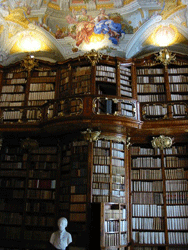 Preserving the Past for Future Generations
Preserving the Past for Future Generations
Libraries, museums, historians, archivists, teachers, filmmakers, publishers, and database creators rely on the public domain to collect, preserve, and teach us about our past. Anyone can freely restore and digitize works published in 1925 and before, but far too many projects have had to abandon older works because of the extraordinarily long copyright term. Libraries avoid digitizing important resources, archives and databases are incomplete, important historical images are redacted from documentaries, museums cannot publish or digitize millions of pages of archival documents, photographs, oral histories, and reels of film (as the US Copyright Office has explained), all because the copyright ownership of these orphan works cannot be determined.
 The case of film preservation is particularly troubling because older films are literally disintegrating, soon to be lost forever. The overwhelming majority of our cinematic heritage consists of orphan films — they are covered by copyright but have no ascertainable copyright owner. They include newsreels, documentaries, anthropological films, portraits of minority life in the United States, instructional films, and even some Hollywood studio productions. Because copyright law prevents scholars and citizens from using these orphan films (including copying and restoring them for preservation), the existing copies are actually disintegrating. This is because the cellulose nitrate base on which they were made makes them prone to shrinkage, to outgassing that destroys the film’s emulsion, and even to spontaneous combustion. The vast majority (upwards of 90%) of films from the 1910s have already decayed beyond the possibility of restoration. The numbers are only slightly better for works from 1920 to 1950. And the number of orphan films is staggering. As of 2005, of the 13,000 films housed at the Museum of Modern Art, over half were orphan works unavailable to the public. Vast numbers of the 150,000 titles held at the Library of Congress and the 46,000 tiles at the UCLA Film and Television Archive were also orphan films. (For more information, see the 2005 Report on Orphan Films submitted by the Center for the Study of the Public Domain at the invitation of the Copyright Office.) The law does allow libraries and archives (not preservationists generally) to digitize films during the last 20 years of their copyright term, but only in limited circumstances: the library or archive first has to determine through a “reasonable investigation” both that the work is not being commercially exploited, and that they cannot obtain another copy of it at a reasonable price.
The case of film preservation is particularly troubling because older films are literally disintegrating, soon to be lost forever. The overwhelming majority of our cinematic heritage consists of orphan films — they are covered by copyright but have no ascertainable copyright owner. They include newsreels, documentaries, anthropological films, portraits of minority life in the United States, instructional films, and even some Hollywood studio productions. Because copyright law prevents scholars and citizens from using these orphan films (including copying and restoring them for preservation), the existing copies are actually disintegrating. This is because the cellulose nitrate base on which they were made makes them prone to shrinkage, to outgassing that destroys the film’s emulsion, and even to spontaneous combustion. The vast majority (upwards of 90%) of films from the 1910s have already decayed beyond the possibility of restoration. The numbers are only slightly better for works from 1920 to 1950. And the number of orphan films is staggering. As of 2005, of the 13,000 films housed at the Museum of Modern Art, over half were orphan works unavailable to the public. Vast numbers of the 150,000 titles held at the Library of Congress and the 46,000 tiles at the UCLA Film and Television Archive were also orphan films. (For more information, see the 2005 Report on Orphan Films submitted by the Center for the Study of the Public Domain at the invitation of the Copyright Office.) The law does allow libraries and archives (not preservationists generally) to digitize films during the last 20 years of their copyright term, but only in limited circumstances: the library or archive first has to determine through a “reasonable investigation” both that the work is not being commercially exploited, and that they cannot obtain another copy of it at a reasonable price.
The problem does not only affect films. In 2001, the American Historical Association (AHA) decided to create a freely available online collection of Civil War newspaper editorials, using two volumes originally published by the AHA in 1931 and 1942. AHA staff quickly discovered that no copyright renewal was ever filed for the second volume, edited by Harold C. Perkins, and it subsequently had entered the public domain. However, the editor of the first volume, Dwight L. Dumond, had renewed the copyright in his own name in 1959. AHA staff confirmed through obituaries that Dr. Dumond had passed away in 1976 and had been survived by his wife and two children. The staff then consulted with Dumond’s former colleagues, university libraries, Masonic lodges (to which Dumond had belonged), and veterans’ associations (since Dumond had fought in World War I) in attempts to locate his heirs. Finally, when the staff contacted the Washtenaw County Probate Office to request a copy of Dumond’s will, they discovered that his financial effects had been ceded to a now defunct trust company (which would presumably have controlled any royalties generated by the book). The AHA eventually abandoned the project after determining that it couldn’t guarantee protection from potential copyright liability: “Despite considerable expense and effort, we were unable to make available work that is only of historical and scholarly, rather than commercial, interest.” (Edited excerpt from comments on orphan works by the American Historical Association to the U.S. Copyright Office, March 25, 2005.)
You can read more about the current costs associated with orphan works in The Chronicle of Higher Education’s “Out of Fear, Colleges Lock Books and Images Away From Scholars” and the American Bar Association Journal’s “A Trove of Historic Jazz Recordings Has Found a Home in Harlem, But You Can’t Hear Them.”
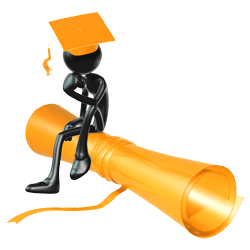 Making Education More Affordable and Interactive
Making Education More Affordable and Interactive
An introductory college course on modern political thought will usually include well-known works like Machiavelli’s The Prince, Hobbes’s Leviathan, Locke’s A Letter Concerning Toleration and The Second Treatise on Government, Rousseau’s The Social Contract and Discourses, and Mill’s On Liberty. The specific content of the course will vary, but most of these writings will make an appearance. Each of these works exists in the public domain. The full texts are available online for free. If you wanted to have hard copies of the texts, you could purchase widely reputable versions of all seven texts through Hackett Publishing for a total of less than $50. And it’s not just cost – because these works are in the public domain, teachers can freely translate, annotate, combine, adapt, or excerpt from them to create new educational resources, and publish these resources online for others to use.
As students know, the readings for a course with contemporary, copyrighted readings will be much more expensive. You might be able to shop around and find used books. But if you buy them new (even at a bargain on Amazon), you may have to spend hundreds of dollars. And, because these works are copyrighted, you cannot post your extensively annotated compilation of them online without worrying about numerous possible lawsuits. Of course, copyright doesn't mean that educational materials have to be expensive. The Center offers its educational materials for free online, and in low-cost print versions—here are our comic book about the history of music, our comic book about fair use and documentary film, and our open Intellectual Property coursebook. Our books are copyrighted, but that is what allows us to make them freely available under Creative Commons licenses.
 Opening Government to the People
Opening Government to the People
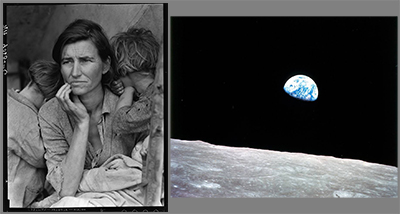
Migrant Mother and Earthrise are US government public domain images
All works of the government are part of the public domain! The Copyright Act explicitly states that all works by the Federal government are in the public domain. This includes legislation, regulations, legal opinions, and hearings. In 2020, the Supreme Court made clear that works from state governments are also in the public domain. In Georgia v. Public.Resource.Org, the Court held that Public.Resource.Org, who is leading efforts to make government information accessible and searchable online, can freely post official legal materials such as the annotations in the Official Code of Georgia Annotated (the Georgia statutes), because these annotations are uncopyrightable “government edicts” and are therefore in the public domain. Under the "government edicts doctrine," anything authored by government officials who are empowered to speak with the force of law, including judges and legislators, is not copyrightable. Quoting from the Supreme Court opinion: "The animating principle behind this rule is that no one can own the law. 'Every citizen is presumed to know the law,' and 'it needs no argument to show . . . that all should have free access' to its contents." Hopefully online repositories for legal materials will begin to offer a free alternative to the government’s PACER website, which charges for access to federal court filings. The public domain also includes the creative output from government projects, such as the NASA collections NASA on The Commons (flickr) and NASA image and video library, the famous “Earthrise” photograph taken by astronaut William Anders, and the Farm Security Administration - Office of War Information Photograph Collection, a pictorial record of American life from 1935-1944 that contains the powerful photo “Destitute pea pickers in California. Mother of seven children. Age thirty-two. Nipomo, California” (“Migrant Mother”) taken by Dorothea Lange.
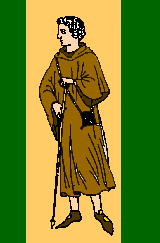 Scholarship
Scholarship
Academic researchers can freely use public domain material, but what happens when their research requires copyrighted material from as far back as the 1930s? Consider Dr. Kate Sampsell’s dissertation, “To Grab a Hunk of Lightning”: An Intellectual History of Depression-Era American Photography. During the course of preparing her manuscript for publication, Dr. Sampsell sought to track down copyright owners of documents supporting a 1932 book that exposed “the horrors of the chain gang for African Americans in Georgia.” The amicus brief of the College Art Association and other organizations supporting the petitioner in Eldred v. Ashcroft explains what happened: “The repository holding these materials would not allow her to have copies of written materials and images even for her own use, much less for publication. Some of the materials, in fact, were taken from the Georgia Bureau of Prisons, which wanted them suppressed. Before the [Copyright Term Extension Act], these materials would have fallen into the public domain within a few years from now. Copyright law has succeeded in silencing what segregationists could not.”
As you can see, the public domain is extremely valuable! But, because of term extensions, we’ve had to wait almost a century before copyrighted works enter the public domain (in 2021, works from 1925 are finally freely available). Under current copyright terms – life plus 70 years for natural authors, and 95 years from publication for works of corporate authorship – you’re unlikely to see any works created in your lifetime enter the public domain. This imposes great (and in many cases unnecessary) costs on creativity, on libraries and archives, on education and on scholarship. More broadly, it imposes costs on our collective culture. Even for the works that are still commercially available, the shrinking public domain increases costs to citizens and limits creative reuse. But at least those works are available. Unfortunately, much of our cultural heritage, perhaps the majority of the culture of the last 80 years, consists of the orphan works described above—works that have no identifiable or locatable copyright holder. Though no one is benefiting from the copyright, they are nevertheless presumptively off limits.
NOTE: Many of the activities highlighted above depend on access to works whose copyrights have expired. The public domain also includes material that is not protectable by copyrights at all, such as ideas, facts, and genres — these are also crucial building blocks for creativity and progress. In addition, many important activities such as criticism, commentary, news reporting, and limited quotation depend on fair use, which allows you to use works that are still protected by copyright (and not yet in the public domain) under certain circumstances.
 Public Domain Day 2021 by Duke Law School's Center for the Study of the Public Domain is licensed under a Creative Commons Attribution-ShareAlike 3.0 Unported License.
Public Domain Day 2021 by Duke Law School's Center for the Study of the Public Domain is licensed under a Creative Commons Attribution-ShareAlike 3.0 Unported License.




